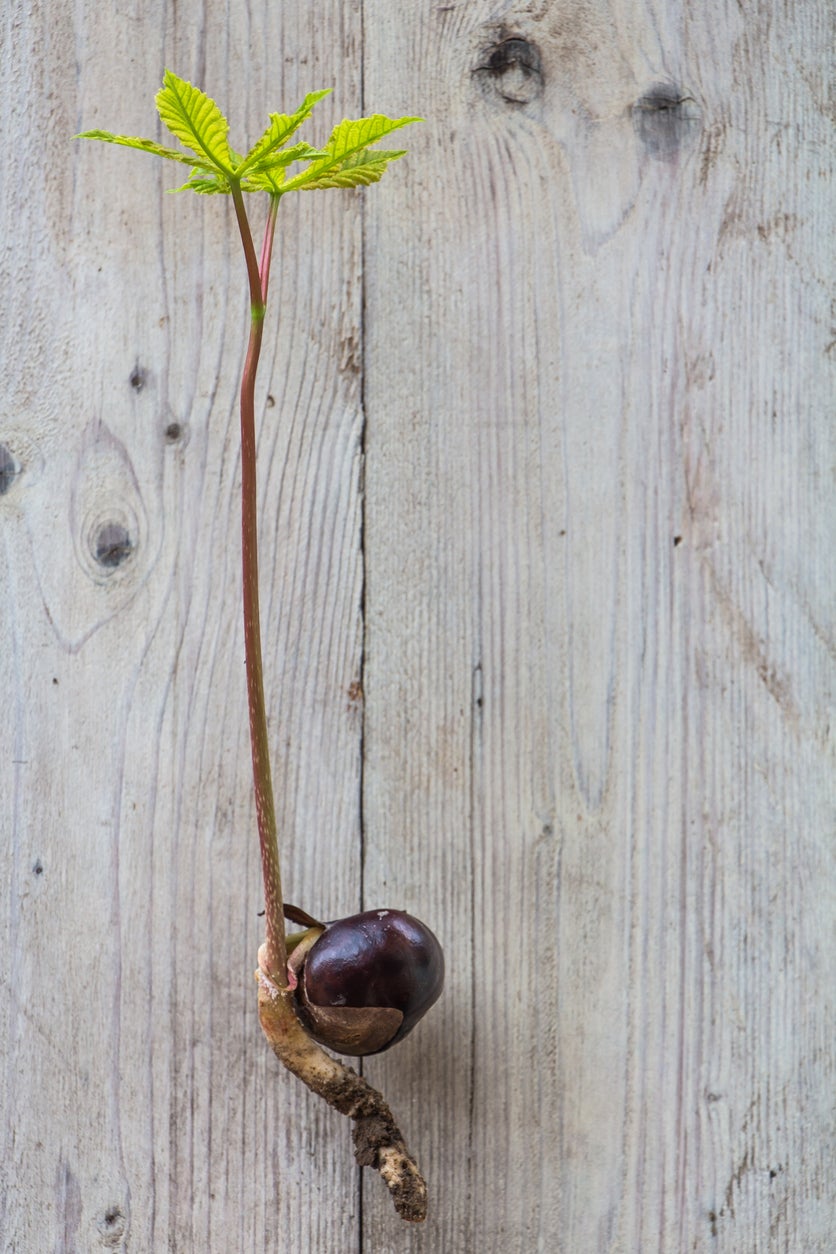Horse Chestnut Seed Propagation – How To Plant Horse Chestnuts


Horse chestnut seed propagation is a fun project you might try with a child. It is always exciting to teach them about how to grow from seed or, in this case, from conkers. Conkers, often called the buckeye, contain seeds from which new trees can grow. These are the fruit of the horse chestnut tree. However, the conker must be opened for the release of the seeds.
Growing Horse Chestnut from Seed
Conkers emerge from a prickly fruit covering that starts out green and turns shades of yellow as it ages. Growing a horse chestnut tree from seed begins with chilling the conker. If seeds remain outside during cold winter days, this is sufficient chilling, but they’re unlikely to still be there in spring. If you wish to attempt propagation, gather the horse chestnuts when they fall from the tree in early autumn.
Chill them over winter in the fridge or in an unheated area, such as an outdoor building. These seeds need at least two to three months of chilling time, called cold stratification, to germinate. When you’re ready to plant, dunk the conkers into a glass of water. Those that float are not viable and should be discarded.
Planting Horse Chestnut Conkers
When planting horse chestnut conkers in spring, start them in a half gallon container until you see growth. The conker should be open before planting, however, it might open in the soil. Try it both ways if you like.
Plant in a composted, well-draining soil. Keep the soil moist, but not overly wet. Learning when to plant horse chestnuts is important, but you can attempt to get them started any time after they’ve had the proper chilling. Plant in autumn and let the conkers chill in the container if you prefer.
Make sure to locate them in a protected area so wildlife critters do not dig them up and make off with them. For continued development, upgrade to a bigger pot as roots fill the first container or plant them into the ground. If you plant into another pot, use a large one, as the horse chestnut tree gets big. Make sure to choose a sunny spot for planting where the tree has plenty of room to grow.
Now that you know how to plant horse chestnuts and how easy they grow, you may want to start more than one. Imagine how excited your child will be to see their planting turn into a 100 foot (30 m.) tree, although they’ll no longer be a child when that happens. Remember, unlike other chestnuts, the horse chestnut is not edible and is actually poisonous to humans.
Sign up for the Gardening Know How newsletter today and receive a free copy of our e-book "How to Grow Delicious Tomatoes".

Becca Badgett was a regular contributor to Gardening Know How for ten years. Co-author of the book How to Grow an EMERGENCY Garden, Becca specializes in succulent and cactus gardening.